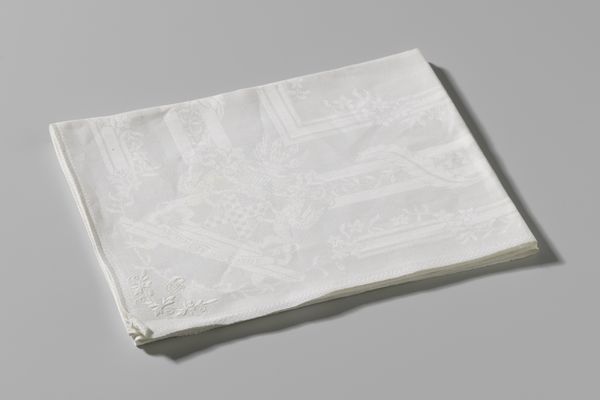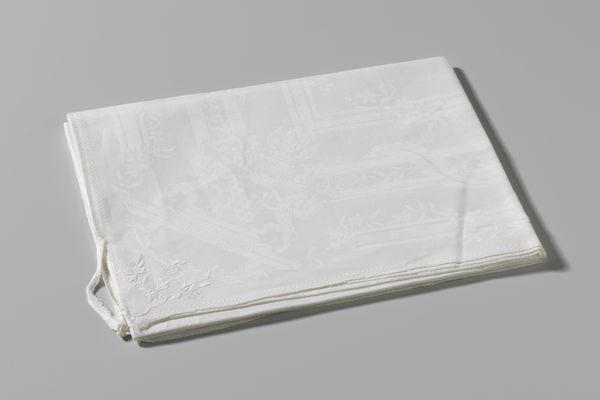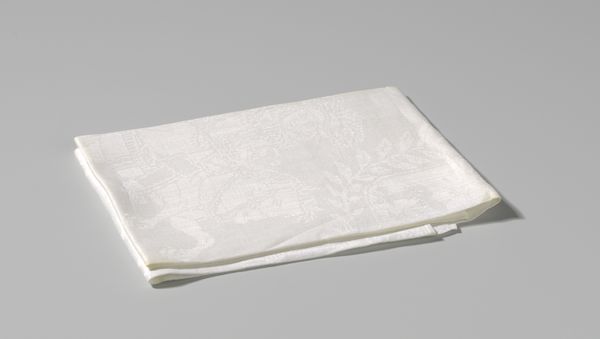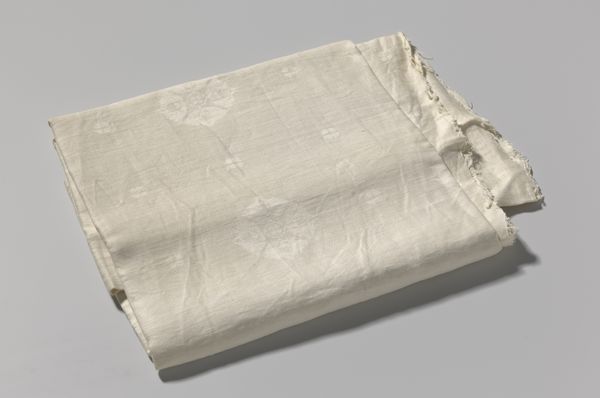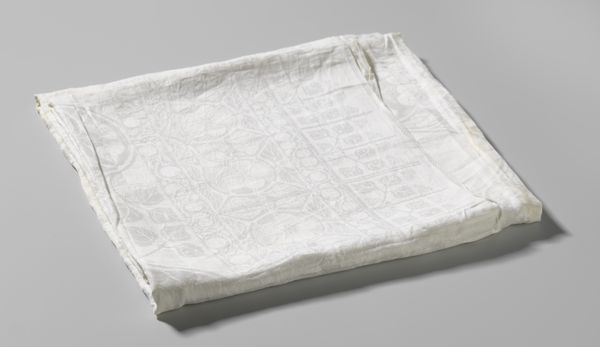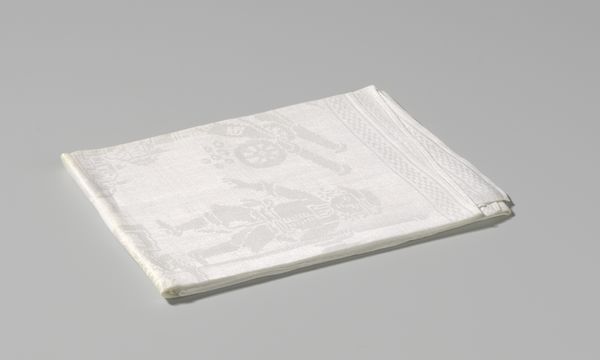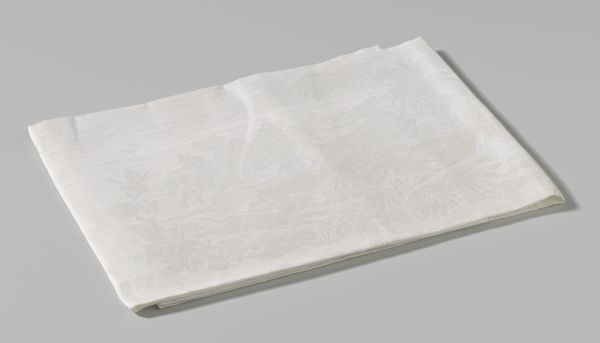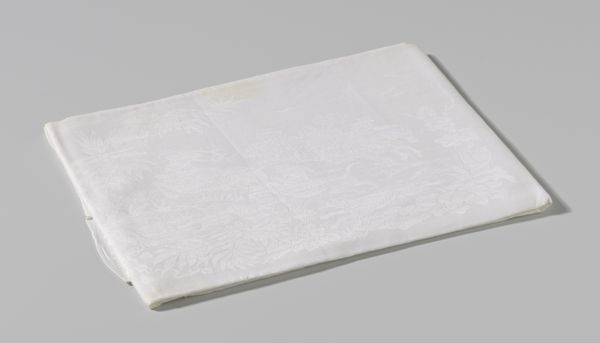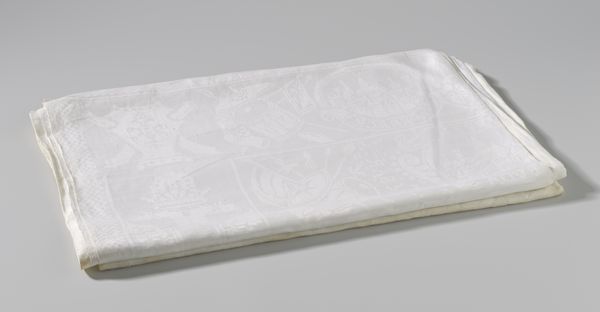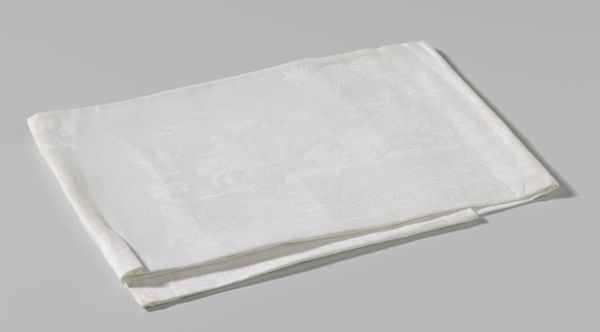
textile, photography
#
studio photography
#
product shot
#
reduced colours
#
fashion mockup
#
studio lighting mockup
#
textile
#
personal journal design
#
photography
#
product mock up
#
design mock up
#
studio mock-up
#
design on paper
Dimensions: height 110 cm, width 90.5 cm
Copyright: Rijks Museum: Open Domain
Curator: This is a photograph of a white linen damask napkin, or "Servet van wit linnendamast" as it was called, dating back to 1706. Editor: Ah, beautiful! Simple and austere at first glance, but that intricate design, almost ghost-like, pulls you in. It’s funny, something so functional and everyday, transformed into this canvas of subtle storytelling. Curator: Linen damask like this, even a simple napkin, would have been quite precious at the time. The intricate weaving process allowed for elaborate designs to be woven directly into the fabric itself. This particular piece gives us insight into the refined tastes of the period, where even functional items were elevated to an art form. It reminds me of the layered meanings within the Unicorn Tapestries, but much more modest, of course. Editor: Absolutely. I'm wondering, what were the popular motifs in those damask patterns? Any symbolic common threads? Like secret codes whispered across the dining table! Curator: Certainly, it's very likely. Recurring imagery from the period often draws heavily from religious iconography, heraldic symbols, or popular folklore. Textile arts often served as carriers of collective memory, communicating beliefs and social structures to audiences whether they were literate or not. We can learn a lot from its history by unraveling visual symbolisms of the period. Editor: Wow, it's hard to look at a seemingly simple piece of white linen without imagining the echoes of past meals and muted conversations swirling around it. And it makes you think - what will a picture of a folded piece of cloth say about us centuries from now? Food for thought, isn't it? Curator: Indeed. The most commonplace objects carry the weight of time and cultural meaning within them.
Comments
No comments
Be the first to comment and join the conversation on the ultimate creative platform.
